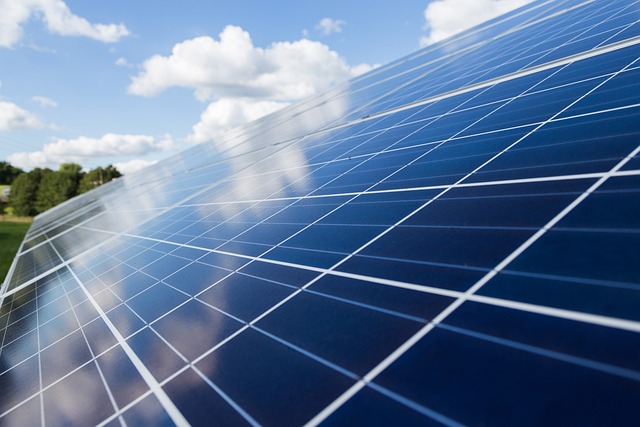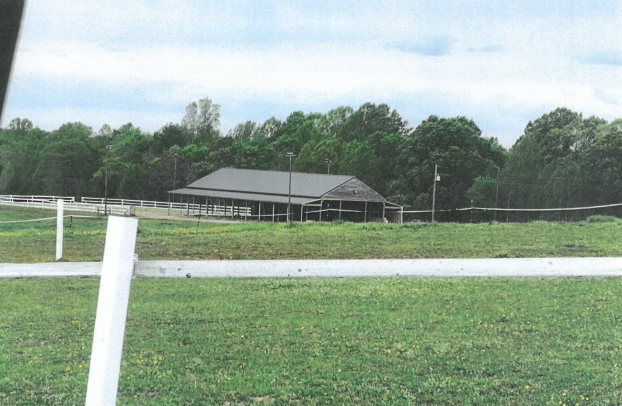Green Bay Solar gets a final vote from Prince Edward supervisors
Published 3:30 pm Wednesday, June 11, 2025
|
Getting your Trinity Audio player ready...
|
The benefits outweigh any potential negatives. That’s how a majority of Prince Edward supervisors said they felt about the proposed Green Bay Solar project. During their Tuesday, June 10 meeting, the group voted, with David Emert and Llewellyn Gilliam in opposition, to approve the conditional use permit and allow the project to move forward.
Earlier this year, CEP Solar brought two projects to the Prince Edward planning commission. One of those was Oak Lane Solar, which was recommended for approval by the commission and then approved last month by supervisors. But it’s the second project that’s drawn both attention and some concern since that March commission meeting.
Green Bay Solar is on 67.8 acres, just off Route 360 near its intersection with Cheatham Road. It’s roughly 9 miles southeast of Farmville, on land that’s primarily timber and pasture. This will be hooked up to the circuit feeding into Dominion Energy’s Flat Creek substation. Out of that property, roughly 39 acres will be set aside for the solar field, with another 29 for setbacks, buffers and wildlife corridors.
Recommended for denial
This project was recommended for denial by the Prince Edward planning commission. Solar isn’t mentioned in the current comprehensive plan. There’s nothing in it to say how to deal with a project, where solar should or shouldn’t go. The revised version, currently being worked on, is expected to touch on it. But until that version is approved by county supervisors, some planning commission members feel like it’s a bit premature, bringing all of these solar projects up for discussion.
The issue is that the planning commission, before recommending a project, has to rule and say they find the project to be in substantial accord with the county ordinances and comprehensive plan. How can you do that, some commission members argued in their earlier meeting, since the current plan doesn’t address solar at all? Commission members had also raised concern about the potential for chemicals to leak into the nearby water and end up in Sandy River Reservoir.
There were also issues raised about the potential for noise and neighbors not liking the fact it was so visible from both their property and the road. Also, this property is not exactly flat. So what kind of damage might be done to the environment, as trees get cut down and the land is reworked to make it fit the project? And what kind of damage could that cause to other properties nearby?
And so, CEP Solar had pulled this project from the May board of supervisors meeting, to rework parts of it and address concerns. That’s how it ended up back on the agenda this week, with company officials saying they had revised the project. They asked supervisors to “come to a different conclusion” than the planning commission did. And, based on the changed made, a majority of supervisors agreed.
Making changes to Green Bay Solar
CEP Solar officials said since that March meeting, they have reconfigured the site plan to locate panels away from the road and away from water sources.
“We feel that we have thoroughly resolved these issues,” said Harry Kingery. He works as the project development manager for CEP Solar. “We’re just asking you to consider coming to a different conclusion (than the commission), based on new information.”
As part of the changes, CEP moved solar panels to the north side of the creek, putting them more than 600 feet from Route 360. Kingery pointed out that’s the size of two football fields. In between, the company will place a timber reserve area, growing timber for commercial use. The solar panels are also 400 feet from adjacent homes and 400 feet from both Cheatham Road and Cheatham Forest Road.
As a result, “there are no neighboring residences with an unobstructed view of the project,” Kingery said. “Nobody can sit on their front porch and see panels. They’d be looking through trees.”
He added that they’ve reduced the size of the project by 30% to decrease the potential of disturbing land. Also, they can only disturb or work on 50% of the site at once.
Residents, supervisors split
A number of people, both for and against the project, came to speak Tuesday. Some argued about the risk involved and long-term danger. Others said it would diversify the tax base and help reduce the tax burden on residents. It was also pointed out that trains run through the area all the time and Route 360 is right there, so why is there a concern for the noise a solar farm would bring? Beyond that, for both sides, it was mainly a rehash of the concerns or support raised in earlier meetings.
As for supervisors, David Emert pointed out there is risk involved, as there’s a lot of things we still don’t know about the panels, how they leak and what type of chemicals could get into the soil. At one time, he reminded everyone, people said lead in gasoline was harmless and nicotine wasn’t a problem. He was also concerned about the water getting into Sandy River Reservoir.
Supervisor Cannon Watson meanwhile said rejecting a project like this doesn’t make sense, based on the current arguments. It was needed, in terms of the tax dollars it will bring in.
“We have 20% of the population in our county below the poverty line,” Watson said, pointing out there’s never enough revenue for these needed projects that come up. He questioned why the county should say no to the money coming in from a small solar project. Watson also didn’t see the need for concern about potential dangers.
“I talk regularly with folks who are in the scientific field at Longwood and Hampden-Sydney,” Watson said. “They are not in fear of these projects.”
The Green Bay Solar financial details
Pattie Cooper-Jones made the motion to approve and it passed, with Emert and Gilliam in opposition. Under terms of the deal, CEP Solar will give a one-time up front payment of $112,500 to the county, with an annual payment of $1,540 per megawatt generated. That annual rate is set to go up 10% every five years.






